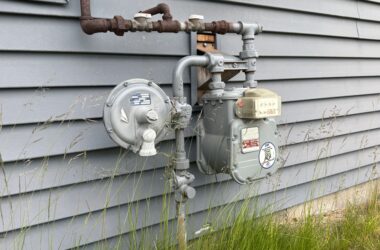The U.S. Department of Energy announced that $12 million in funding to 12 Alaska Native and American Indian communities across the United States for projects that aim to reduce energy costs and increase energy security and resiliency. The projects will power the homes and communities, make their buildings more energy efficient, and install microgrids for essential services and resiliency.
The awardees in Alaska include:
- The Akiachak Native Community will receive $123,220 to install energy-efficient retrofits, including furnaces in the laundry building, as well as an LED lighting upgrade and installation of setback thermostats, in five essential multi-use buildings in the Akiachak Village.
- The Kipnuk Light Plant, a tribally owned utility of the Native Village of Kipnuk will receive $855,978 to purchase, install, and integrate a battery energy storage system into its standalone community wind diesel grid which will displace over 34,000 gallons of diesel fuel.
- The Native Village of Diomede will receive $222,848 to install energy efficiency measures in the new store in the Village, considered to be Alaska’s most remote community situated on an island in the Bering Straits.
- The Native Village of Noatak and the Northwest Arctic Borough in Kotzebue will receive $1,997,265 to deploy a high-penetration solar PV and battery energy storage hybrid system to integrate with the Village’s diesel electric grid, estimated to save the community more than $178,000 each year.
- The Village of Aniak will receive $167,948 to install energy retrofits on four essential multi-use buildings and the Village’s Community Center.
- The Village of Chefornak will receive $854,964 and in cooperation with its community utility Naterkag Light Plant purchase, install, and integrate a battery storage system into its standalone community wind diesel grid.
Sen. Lisa Murkowski joined U.S. Secretary of the Department of Energy, Jennifer Granholm to announce the funding from the DOE Office of Indian Energy:
“We face very, very high energy costs throughout much of this state. In some of our smaller communities, rural residents can face electricity rates that are about 800% higher than the national average. When you think about what this means when you’re paying that much just to stay warm, that is less that you have to feed your family. That is less that you have for everything else that goes on.”
U.S. Rep. Don Young:
“I am very pleased to see these investments in our Alaska Native communities by the Department of Energy. Alaska is unique; our often unforgiving terrain and environment present many challenges for our remote villages. Energy is a critical need, and serves as the basis for economic opportunity and prosperity. Our Native communities should be entrusted to develop their own lands and resources. This funding will go a long way toward increasing energy efficiency, harnessing natural resources, reducing long-term energy costs, and improving air quality. I sincerely congratulate Alaska’s grant recipients and look forward to seeing how the implementation of this funding will move their communities forward.”
Since 2010, the Department of Energy’s Office of Indian Energy has invested over $100 million in more than 190 tribal energy projects across the contiguous 48 states and Alaska. Collectively, the selected projects are estimated to result in nearly 3.5 megawatts of clean energy generation and over 3.5 megawatt-hours of battery storage, serving over 1,300 tribal buildings and saving those communities a combined $1.8 million annually.






